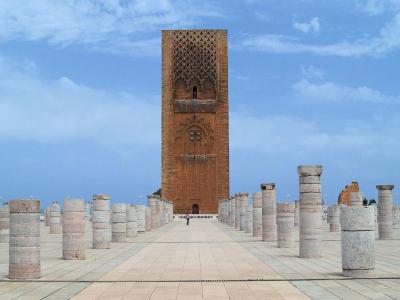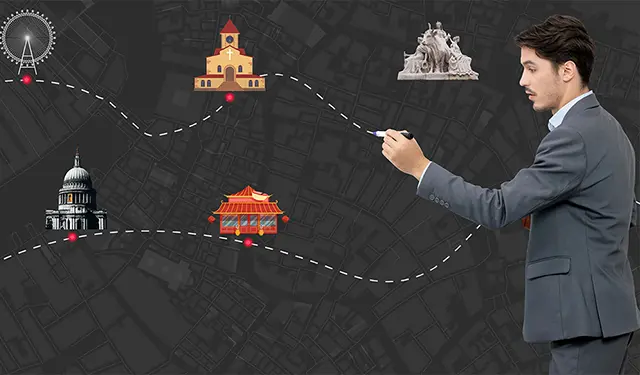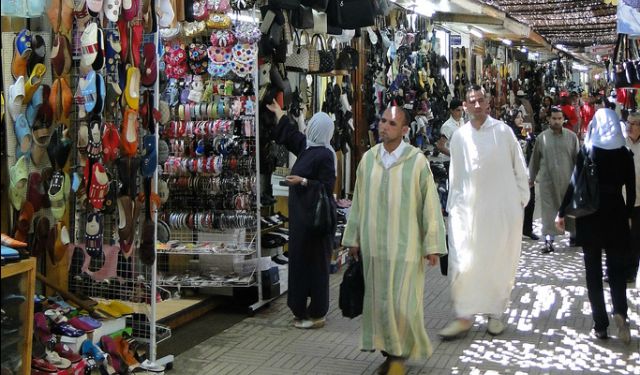
Hassan Tower, Rabat (must see)
The Hassan Tower (Tour Hassan) is the unfinished minaret of an ambitious mosque project commissioned by Abu Yusuf Yaqub al-Mansur, the third caliph of the Almohad Caliphate, in the late 12th century. Intended to be the tallest minaret in the world and part of what would have been the largest mosque in the western Islamic world, the project was abruptly halted in 1199 upon the caliph’s death. What remains today is a 44-meter-tall minaret, the unfinished mosque’s 348 columns, and portions of its walls, forming a historical and architectural complex alongside the modern Mausoleum of Mohammed V.
Al-Mansur of the Almohad dynasty envisioned Rabat as a grand capital, naming it Ribat al-Fath. His plan included fortifications, monumental gates, and an immense mosque, with Hassan Tower as its highlight. Inspired by the Koutoubia Mosque, Seville's Giralda, and the Lighthouse of Alexandria, it featured ramps instead of stairs for a horseback ascent. Had it been completed, the mosque would have surpassed the Great Mosque of Córdoba in size, with stone columns replacing the usual Almohad brick piers—a challenge that may have led to its abandonment. Its design also included three inner courtyards for added light and airflow.
Though incomplete, the mosque suffered additional damage during the 1755 Lisbon earthquake, leading to the further collapse of its structure. In the 20th century, both French colonial and Moroccan archaeologists worked to preserve and reconstruct the site. In the 1960s, the area was transformed to accommodate the Mausoleum of Mohammed V, completed in 1971 under the design of Vietnamese architect Cong Vo Toan. The Hassan Tower site was later inscribed as part of Rabat’s UNESCO World Heritage designation in 2012.
Today, the Hassan Tower stands as a red ochre sandstone relic of a grand Almohad vision, visible from afar due to its strategic placement overlooking the Bu Regreg River. Despite its unfinished state, its ornate sebka patterns, engaged columns, and horseshoe-shaped windows remain a testament to the architectural ambition of the Almohads. Along with the nearby mausoleum, it serves as one of Rabat’s most significant historical and touristic landmarks.
Al-Mansur of the Almohad dynasty envisioned Rabat as a grand capital, naming it Ribat al-Fath. His plan included fortifications, monumental gates, and an immense mosque, with Hassan Tower as its highlight. Inspired by the Koutoubia Mosque, Seville's Giralda, and the Lighthouse of Alexandria, it featured ramps instead of stairs for a horseback ascent. Had it been completed, the mosque would have surpassed the Great Mosque of Córdoba in size, with stone columns replacing the usual Almohad brick piers—a challenge that may have led to its abandonment. Its design also included three inner courtyards for added light and airflow.
Though incomplete, the mosque suffered additional damage during the 1755 Lisbon earthquake, leading to the further collapse of its structure. In the 20th century, both French colonial and Moroccan archaeologists worked to preserve and reconstruct the site. In the 1960s, the area was transformed to accommodate the Mausoleum of Mohammed V, completed in 1971 under the design of Vietnamese architect Cong Vo Toan. The Hassan Tower site was later inscribed as part of Rabat’s UNESCO World Heritage designation in 2012.
Today, the Hassan Tower stands as a red ochre sandstone relic of a grand Almohad vision, visible from afar due to its strategic placement overlooking the Bu Regreg River. Despite its unfinished state, its ornate sebka patterns, engaged columns, and horseshoe-shaped windows remain a testament to the architectural ambition of the Almohads. Along with the nearby mausoleum, it serves as one of Rabat’s most significant historical and touristic landmarks.
Want to visit this sight? Check out these Self-Guided Walking Tours in Rabat. Alternatively, you can download the mobile app "GPSmyCity: Walks in 1K+ Cities" from Apple App Store or Google Play Store. The app turns your mobile device to a personal tour guide and it works offline, so no data plan is needed when traveling abroad.
Hassan Tower on Map
Sight Name: Hassan Tower
Sight Location: Rabat, Morocco (See walking tours in Rabat)
Sight Type: Religious
Guide(s) Containing This Sight:
Sight Location: Rabat, Morocco (See walking tours in Rabat)
Sight Type: Religious
Guide(s) Containing This Sight:
Walking Tours in Rabat, Morocco
Create Your Own Walk in Rabat
Creating your own self-guided walk in Rabat is easy and fun. Choose the city attractions that you want to see and a walk route map will be created just for you. You can even set your hotel as the start point of the walk.
Rabat Introduction Walking Tour
Resting on the shores of the Bouregreg River and Atlantic Ocean, the capital city of Morocco, Rabat, is known for its picturesque natural surroundings, much as for its man-made beauty manifested in a mix of old and new architecture (featuring Islamic and French-colonial styles), abundance of mosques and historic monuments. The Medina (Old City) of Rabat is a World Heritage Site.
Rabat was... view more
Tour Duration: 1 Hour(s)
Travel Distance: 2.0 Km or 1.2 Miles
Rabat was... view more
Tour Duration: 1 Hour(s)
Travel Distance: 2.0 Km or 1.2 Miles
Rabat Shopping Walk
Rabat is heaven for those who love shopping. Indeed, the abundance of shopping opportunities – traditional markets and shopping streets – in this city gives no reason to doubt that. There you can find all kinds of oriental delights you can possibly think of.
One of Rabat's top shopping destinations is Consuls Street (rue des Consuls). Steeped in a 500-year history, this street houses... view more
Tour Duration: 1 Hour(s)
Travel Distance: 1.0 Km or 0.6 Miles
One of Rabat's top shopping destinations is Consuls Street (rue des Consuls). Steeped in a 500-year history, this street houses... view more
Tour Duration: 1 Hour(s)
Travel Distance: 1.0 Km or 0.6 Miles


